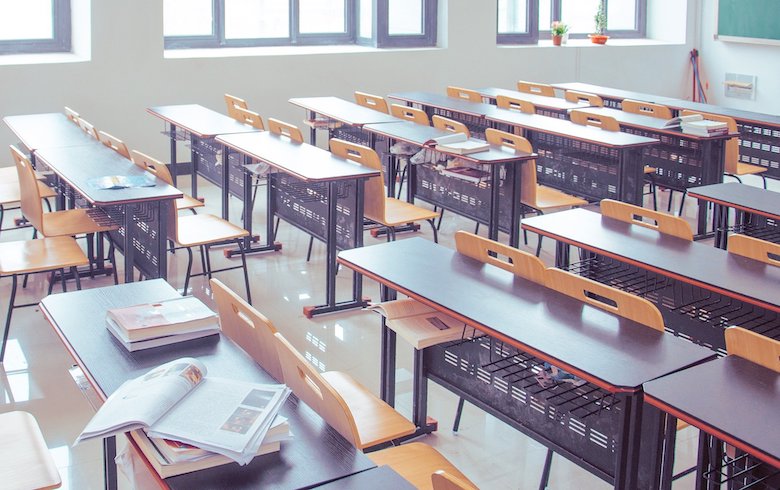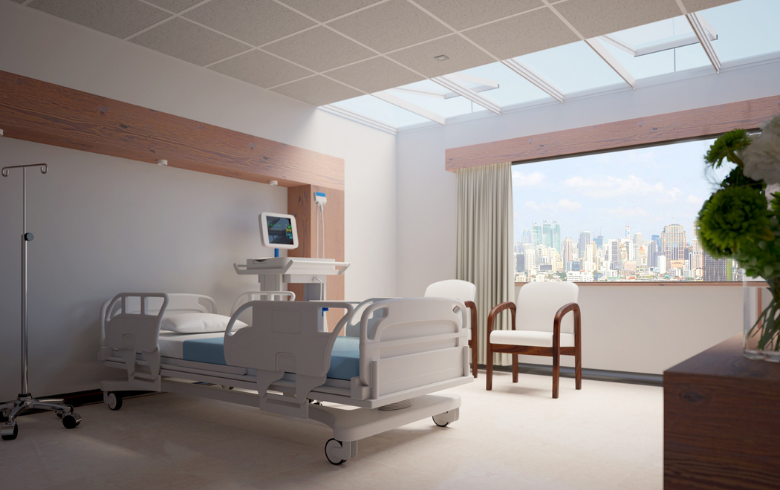Did you know that students spend over 15,000 hours in a school building by the time they graduate high school? Did you also know that the average school building will last for roughly 50 years?
In other words, if you design or construct school buildings, you have a huge hand in the lives of innumerable students - across multiple generations!
It could go without saying that, when designing and building schools, it's important to build as healthy a building as possible. However, because many US schools were built 50+ years ago, they are susceptible to poor indoor conditions like air pollution, mold, elevated noise levels, radon, asbestos, inadequate lighting, and more.
Schools and Student Health
According to the National Center for Education Statistics, in the past 80 years, 250,000 public schools were consolidated into roughly 98,000. And according to the US EPA, schools have four times more occupants per building than office buildings do, even in the same amount of floor space. This results in rapidly deteriorating buildings where students are forced into spaces not originally intended for study (like in the 31% of schools that use portable classrooms). New research by Harvard has even found that ambient air pollution and access to green space are directly associated with chronic absenteeism in Massachusetts' public schools.
But just how much is student performance affected by the building they're in? Quite a bit.
Inadequate ventilation has repeatedly been found to affect student health, as well as their thinking and performance. Low ventilation rates in schools have been associated with:
- Asthma symptoms,
- Respiratory infections leading to absenteeism,
- More frequent nurse visits,
- Fatigue,
- Impaired attention spans, and
- Poorer performance on math and reading tests.
Noisy environments also have a greater impact on children due to their developing language skills. As such, schools with noisier environments have been shown to affect children's comprehension, speech, memory, and other cognitive processes.
Windowless classrooms, a design trend that began with the 1973 energy crisis, are also a part of what makes older school buildings unhealthy. Lack of access to natural daylight has long been associated with headaches, depression, nearsightedness, and eyestrain. Alternatively, schools where students have access to windows, more outside time, and higher illuminance levels in the classroom have seen a reduction in these symptoms as well as improved sleep quality.
Creating Healthy School Buildings
We've talked before about the 9 foundations of a healthy building. To design or build healthy schools that positively affect student health, thinking, and performance, you'll need to consider all 9 foundations.
In this blog, we'll keep our focus on how improved ventilation, air quality, and lighting benefit student health and learning, but for in-depth information regarding all 9 foundations, check out the PDF recently released by the Harvard T.H. Chan School of Public Health.
Ventilation and Indoor Air Quality
Did you know that because children's lungs are still developing, they breathe in larger volumes of air relative to their body size? And unfortunately, more than 25 million children (nearly 50% of American students) attend schools that haven't adopted an indoor environmental quality (IEQ) plan or formed a strategy to identify and remediate poor air quality. What's worse: common indoor air pollutants in schools have been observed at levels two to five times higher than outdoor concentrations. This, in turn, has been associated with acute chronic health effects like asthma, allergies, mucous membrane irritation, central nervous system functioning impact. School staff, including teachers and custodians, are also negatively affected by poor IEQ; educational employees report the highest proportions of work-related asthma cases in the US.
Studies have shown that improving IEQ can positively affect cognitive function outcomes, like attention, concentration, decision-making, and memory. And multiple other studies have shown that when steps are taken to mitigate poor IEQ, students' academic performance improves.
Lighting
Lighting plays an essential role in an educational environment. Good-quality lighting creates optimal viewing conditions for students to read, write, and perform other classroom learning activities.
There aren't as many studies about lighting impact in schools as there are about air quality impact, but we do know that children, with their larger pupils and significantly greater light-induced melatonin suppression, are more sensitive to light exposure than adults. And young adolescents have greater circadian-system sensitivity to light exposures than older adolescents. Low levels of indoor lighting combined with less time spent outside have also been linked with an increased risk for nearsightedness. Meanwhile, studies on daylight's health impacts report benefits like improvement of vision, better sleep quality, and reduced symptoms of nearsightedness, eyestrain, headache, and depression.
Schools and Skylights
You may have already guessed why we chose to focus on those foundations for a healthy building. But in case you didn't, it's because skylights can help mediate these concerns in schools!
VELUX skylights are expertly crafted and glazed to ensure bright, natural light throughout the buildings in which they're installed. Certain models are also able to open to allow fresh air to flow in and dusty, stale air to flow out. So, when it comes to designing and building healthy school buildings, consider skylights!




.png?width=805&name=get%20the%20commercial%20application%20ebooks%20(1).png)